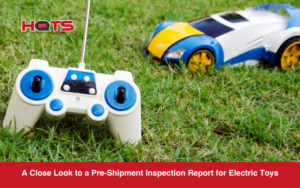If your company is involved in manufacturing and importing, you will need to at some point ensure your essential pump devices meet safety, performance, and durability standards through inspections.
Whether it’s centrifugal pumps, water pumps, or specialised industrial variants, these inspections are as important as they are necessary, since failing to properly inspect your equipment can lead to costly failures or see you being fined or even banned from certain international markets.
Knowing where to begin with pump inspections can be difficult and confusing, however this comprehensive guide will take you through the protocols and checklists you’ll need to optimise your process if you’re an importer, manufacturer, or quality control professional.
How to conduct a Pump Quality Inspection
Pump quality inspection refers to evaluating pumps during different production stages. This includes pre-shipment checks and checks for functionality, workmanship and adherence to specifications. Inspections usually follow certain standards designed to identify defects early and mitigate risks so that they can function as intended.
These inspections are vital for products manufactured in regions such as China, where pre-shipment checks involve using sampling plans that cover things like performance tests, visual assessments and documentation reviews, designed to ensure that the final product aligns with client requirements.
Standards and Protocols for Pump Quality Inspections
To effectively inspect pump quality, inspectors rely on standardised protocols which address and test the design and materials of a pump. Common standards include:
- ANSI/API 610 (used for identifying minimum specs for designs)
- ASME B73.2 (used with vertical in-line centrifugal pumps, normally for chemical processing)
- BS 5257 (used for horizontal end-suction centrifugal pumps, including seal cavities and base plate dimensions)
- BS EN 25199 (used for the designs and materials for centrifugal pumps)
- DIN 5199 (used for general technical requirements)
While they all cover different areas, each of these protocols use similar mechanical, audio and visual inspections which allow inspectors to easily confirm a pump’s integrity, with tests lasting around one-hour to simulate real-world operations. However, while these protocols may be similar, it is also true that different types of pumps do undergo different types of testing, so don’t expect all of your pumps to be tested the same way!
Common Problems Found in Pump Quality Inspections
There are a number of common defects which pump quality inspections are adept at identifying. These defects can compromise a pump’s performance and reduce its longevity, and the defects that are most frequently identified through testing include:
- Leaks (including air, grease and oil leaks)
- Packaging issues (such as ruptured polybags or insufficient shipping protection)
- Performance problems (like failures to meet specified speeds, flows or checks)
- Workmanship flaws (like rust, chips or stains on equipment)
- Other issues, including those surrounding noise levels, noncompliant sizes or weights, and power consumption.
Defects like these can arise from a number of issues. They may not always be the responsibility of workmen or manufacturers, as they could also be caused by faults in the materials used by the designers, or the facilities used by testers.
But remember: discerning the cause is not as important as identifying the defect early enough to avoid causing your company serious problems.
Step-by-Step Pump Inspection Checklist
Your pump quality inspections should use a robust checklist of criteria in order to ensure you can identify as many potential problems as possible. We’ve put together an example checklist with key steps drawn from HQTS’ own inspections and the standard protocols we use:
| Inspection Category | Inspection Steps | Sample Size | Key Checks |
| Quantity | Verify total units against PO, shipment, and packing quantities. | Full batch review | Confirm pieces, cartons, and conformity to order specs. |
| Workmanship | Visual and functional assessment for defects. | 32 pieces (e.g., ISO 2859 G-II) | Check for rust, chips, gaps, stains; include function, power consumption, hi-pot, and earth resistance tests. |
| Style, Color & Documentation | Compare against specs and certifications. | All samples | Verify product specs, digital photos, construction data, manuals (e.g., English/multi-language), GS/CE certificates. |
| Field Test & Measurement | Perform on-site tests for performance. | 2-5 samples per test | Internal workmanship, impact, flux, elevate, suction lift, rotational speed, noise level, assembly, measurements (e.g., cord length, dimensions), carton drop, weight. |
| Shipping Mark & Packaging | Inspect marks and packing integrity. | 1-5 cartons | Check shipping labels, polybag condition, carton dimensions/weight; ensure no tears or weaknesses. |
This checklist aligns with AQL (or Acceptance Quality Limit) levels, which measures defects by severity using a scale of numbers where 4 is a minor defect, 2 is a major defect and anything lower is a critical defect. It also includes pending items if factory limitations prevent full testing, such as missing appliances for suction lift or noise checks.
Case Study: Pre-Shipment Inspection of a Water Pump
To illustrate pump quality inspection in action, consider a real pre-shipment inspection report for a water pump conducted in Cixi, China, based on HQTS reports. The inspection followed ISO 2859 Single Normal sampling with a sample size of 32 pieces from a total order of 152 units:
Inspection Findings
The inspection used the checklist above and came back with the following findings:
- Quantity: Conformed fully, with 152 pieces packed in 38 cartons.
- Workmanship: Not conforming due to major defects (e.g., chipped edges at joints: 2 found, rusty screws: 1) and minor defects (e.g., gaps at joints: 2, dirty stains on tubes: 2). Additional issues included rusty soldering and torn polybags on all samples.
- Style, Color & Documentation: Conformed, with consistent specs, photos, manuals, and GS/CE certificates provided.
- Field Test & Measurement: Pending/Non-conforming. Tests like rotational speed, noise level, and suction lift couldn’t be performed due to lack of factory equipment. Elevate check failed (spec: 8m, results: 6.4m-6.6m). Flux was slightly below spec (160 lts/min vs. 155.7-155.8 lts/min). Carton drop test was refused by the factory.
- Shipping Mark & Packaging: Conformed, though carton numbers weren’t assigned yet.
Overall, the batch was deemed non-conforming, with the client holding the final decision on approval or rejection. Five cartons were sealed for reference, but the manufacturer didn’t allow sample retention.
This case is an ideal example of how inspections uncover critical issues like performance shortfalls and workmanship flaws, and prevent subpar products from reaching the market.
Best Practices for Ensuring Pump Quality
To ensure your pumps are in the best possible state they can be by the time it comes for inspection, we recommend taking the following actions:
- Contingency Plans: If tests are pending, schedule follow-ups or lab verifications.
- Documentation: As well as detailed reports, make sure to keep photos so that your company and clients can use them to make informed decisions.
- International Standards: Always align with standards such as BS EN 25199 and ANSI/API 610 for design and testing.
- Preventative Planning: Be vigilant for common defects early in the manufacturing process.
- Test Thoroughly: Make sure your tests are thorough by including noise tests and making sure your factories have access to all the equipment testers will need.
- Third-Party Inspectors: Use providers like HQTS for unbiased evaluations.
By implementing these practices, your company can not only reduce risks, but improve your reputation as well.
HQTS Pump Inspection Services
As we’ve already mentioned, regular and thorough inspections of pump quality are not only important in the manufacturing industry, but completely necessary. They can prevent costly problems, ensure your company maintain high standards, and keep your machinery working well for longer.
Yet good testing is rigorous, takes time and can often be difficult. That’s why many companies choose to partner with third-party inspection services like HQTS. Our well-equipped and experienced inspectors can efficiently perform thorough inspections of your pump quality and give you detailed reports of their findings. Save yourself time, money and grief: get in touch today and let us help you keep your company pumping smoothly.




